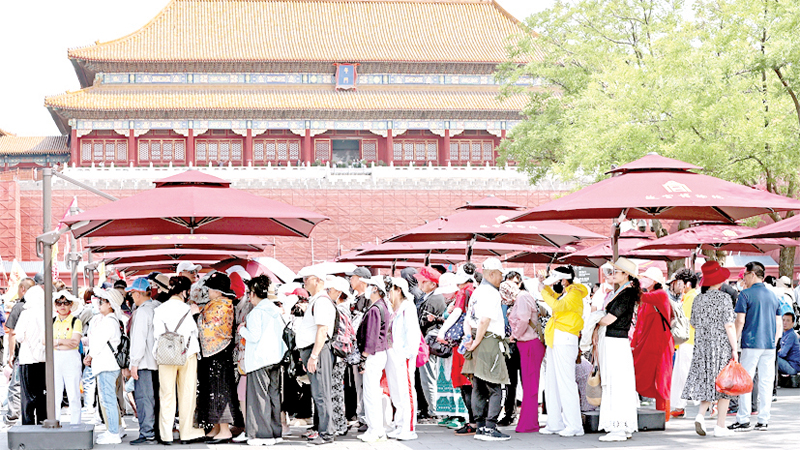The 2025 ITB Shanghai International Travel Fair that kicked off on May 27 shows the robust recovery and innovative dynamism of China’s tourism sector. The three-day event started on an unprecedented scale, with over 700 exhibitors from 85 countries. This time, European exhibitors have taken 35 percent more space compared to last year, while South American participation has surged by 99 percent.
Exhibitors from the Middle East and North Africa have grown by 23 percent, and Asian representation has expanded by 47 percent. First-time exhibitors such as Colombia and Mexico City, alongside enthusiastic exhibitors from the Belt and Road Initiative (BRI) participating countries, underscore China’s growing attraction for international tourism businesses and travelers alike.
China’s inbound tourism is witnessing a remarkable revival. According to the Ministry of Culture and Tourism, 2024 saw 131.9 million inbound tourists, a whopping 61 percent year-on-year increase, restoring visitor numbers to over 90 percent of 2019 levels. Foreign tourists accounted for 26.94 million of this, spending $94.2 billion, up sharply by 77.8 percent.
“China travel” emerged as a prominent international keyword online in 2024, reflecting the surging global interest in China. During the 2025 Spring Festival period, ticket sales from international platforms related to traditional Chinese cultural festivities such as lantern shows and temple fairs rose dramatically, up by 7.5 times. These trends clearly highlight China’s rich and unique cultural heritage as a key attraction for global visitors.
Multiple forces drive this flourishing of inbound tourism. Foremost among these is policy innovation. Enhanced visa facilitation measures giving visa-free entry to travelers from 43 countries and 240-hour transit visa exemptions to visitors from 54 nations have greatly enhanced accessibility.
 Additionally, the shopping tax refund policy, refined with an “instant tax refund upon purchase” scheme, has lowered the refund threshold to 200 RMB ($27.7), significantly boosting visitor spending.
Additionally, the shopping tax refund policy, refined with an “instant tax refund upon purchase” scheme, has lowered the refund threshold to 200 RMB ($27.7), significantly boosting visitor spending.
Simultaneously, major digital payment platforms such as Alipay and WeChat Pay have opened their services to overseas visitors, resolving the payment difficulties previously faced. These sustained policy innovations have improved convenience and satisfaction for international visitors.
International exhibitions and promotional activities also have a pivotal role in revitalizing inbound tourism. ITB China 2025 is matching international buyers and domestic suppliers through its intelligent “Match & Meet” system, facilitating pre-arranged negotiations and significantly enhancing cooperation efficiency. The release of industry whitepapers, specialized forums, and seminars at ITB China will also ensure that exhibitors remain abreast of global market trends.
Government-supported promotions and official endorsements are providing a credible, authoritative channel for international enterprises to understand China’s tourism market dynamics and policy developments while networking events and targeted promotional activities will translate discussions into concrete business outcomes. This comprehensive approach also boosts sustainable growth of cross-border tourism.
For example, a roundtable discussion on May 28 will discuss cruise travel, bringing together senior executives from international cruise companies and Chinese tourism firms to explore innovative pathways for cross-border tourism partnerships.
As China’s cultural tourism sector continues to upgrade and consumer spending keeps rising, the country’s strategic role in the global tourism landscape is poised to strengthen, effectively driving the new “dual circulation” development model, which integrates both the domestic and international markets. CCTN




